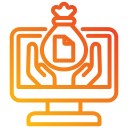
Leveraging Machine Learning for Social Good
Harnessing the power of machine learning for social good is transforming the way communities address complex challenges and create lasting impact. By analyzing vast amounts of data and identifying patterns, machine learning enables organizations to make more informed decisions, allocate resources efficiently, and devise innovative solutions. From healthcare and education to disaster response and environmental protection, the opportunities for positive change are vast and growing. In this exploration, we delve into how machine learning is being applied for the betterment of society, the hurdles faced, and the future potential of this technology to foster a more equitable and sustainable world.
Addressing Public Health Challenges

Predicting Disease Outbreaks
Machine learning models can ingest and analyze large-scale, real-time data from sources like social media, medical records, and environmental sensors to accurately predict disease outbreaks. These predictive capabilities allow health officials to intervene earlier, allocate medical resources more effectively, and potentially contain outbreaks before they escalate. By identifying subtle signals and correlations that might be missed by traditional surveillance methods, machine learning is helping societies become more resilient in the face of public health threats.

Enhancing Diagnostic Accuracy
The use of machine learning in medical diagnostics is revolutionizing how diseases are identified and treated. Algorithms trained on millions of medical images and records are capable of spotting anomalies and diseases—sometimes at earlier stages and with greater accuracy than human clinicians. Early and accurate diagnosis is critical for effective treatment, particularly for conditions like cancer, where timely intervention can dramatically improve outcomes. This technology also helps bridge gaps in regions with limited access to specialized medical expertise.

Targeting Public Health Interventions
Allocating public health resources efficiently is a significant challenge, often complicated by limited budgets and complex populations. Machine learning helps direct interventions by identifying communities or demographics at higher risk of certain diseases. By understanding who is most vulnerable and where efforts are likely to have the largest impact, health organizations can prioritize campaigns and allocate resources optimally, improving public health outcomes and helping ensure that assistance reaches those who need it most.
Enhancing Educational Opportunities
Adaptive learning platforms powered by machine learning can analyze individual student performance and learning styles, creating customized curricula that fit each learner’s unique needs. This personalization ensures that students receive instruction at the right level of difficulty and at an appropriate pace, which not only improves retention but also motivates learners. By continuously adjusting to students’ progress, these systems help close achievement gaps and nurture a love for learning.
Early identification of students who may be struggling is key to preventing dropouts and improving educational outcomes. Machine learning algorithms can examine attendance patterns, performance metrics, and engagement indicators to spot students at risk of falling behind or leaving school. This insight allows teachers and administrators to intervene sooner with targeted support, whether that’s extra tutoring, mentorship programs, or family outreach, which collectively work to ensure educational success for all students.
Schools often face difficult choices about how best to distribute teachers, materials, and funding. Machine learning can analyze student demographics, achievement data, and other relevant variables to help decision-makers allocate resources where they will make the greatest difference. By highlighting inequities and revealing areas of underinvestment, these analytical tools empower school leaders to adopt more equitable and efficient strategies that benefit every learner, especially those from underserved communities.
Improving Disaster Response and Resilience
Forecasting Natural Disasters
Advanced machine learning models are used to analyze geological, meteorological, and historical data to predict the likelihood and severity of natural disasters such as hurricanes, earthquakes, and floods. These forecasts can provide earlier and more accurate warnings, giving people more time to prepare and evacuate if needed. Enhanced forecasting not only saves lives but also reduces economic losses by enabling more timely and targeted protective measures for critical infrastructure and vulnerable populations.
Optimizing Emergency Response
During a crisis, the speed and efficiency of the emergency response are crucial. Machine learning algorithms assist in real-time decision-making by analyzing data from sources such as satellite imagery, social media, and sensor networks. This enables emergency services to track evolving disaster conditions, prioritize deployment of personnel and supplies, and coordinate rescue operations more effectively. By processing and interpreting information at a scale beyond human capacity, machine learning is helping to ensure better outcomes in critical situations.
Facilitating Post-Disaster Recovery
The aftermath of a disaster poses numerous challenges, from restoring services to rebuilding communities. Machine learning aids recovery by assessing the extent of damage using aerial imagery, helping prioritize repair efforts, and predicting the needs of affected populations. By analyzing trends in recovery and identifying potential obstacles, these systems can guide policymakers and aid agencies in devising more effective, data-driven recovery strategies that shorten rebuilding timelines and promote community resilience.
